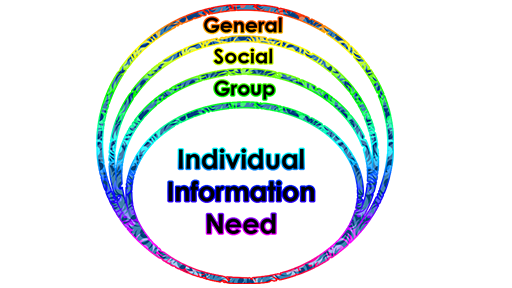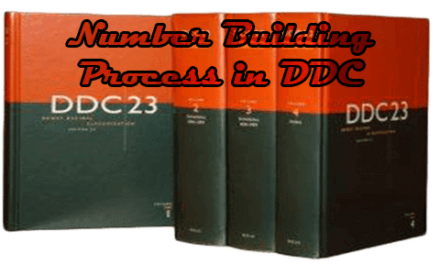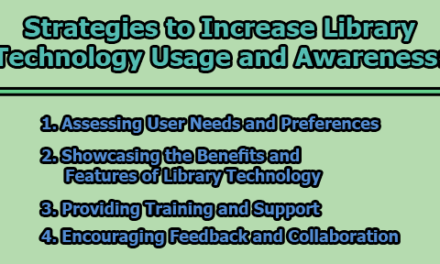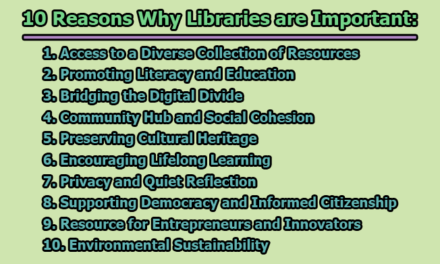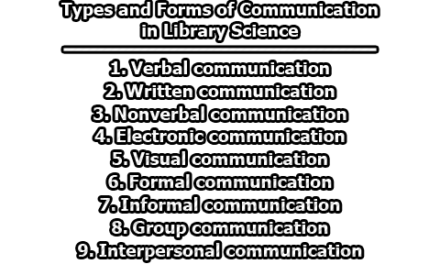Information need refers to a person’s desire or requirement for specific information to satisfy a certain goal or task. It arises when there is a gap between what a person knows or has access to and what they need to know to achieve their objectives or answer a question. Information needs can vary in terms of complexity, urgency, and specificity depending on the situation and the person’s level of knowledge and expertise. Satisfying an information need typically involves identifying, locating, and evaluating relevant information sources and selecting the most appropriate ones to fulfill the requirement. In the rest of this article, we’re going to discuss types of information need, levels of information need, and components of information need.
Definitions of Information Need:
Some important definitions are being;
“Information need is the gap between a user’s current knowledge and the knowledge required to achieve a particular goal. As librarians, our role is to help users identify their information needs, locate relevant sources of information, and evaluate the quality and credibility of the information they find.” – (Librarian’s Perspective)
“Information need is the user’s desire or requirement for information that will help them accomplish their task or achieve their goal. Understanding a user’s information need is crucial for designing effective information architectures and intuitive interfaces that provide the right information at the right time.” – (User Experience Designer’s Perspective)
“Information need is a cognitive state of uncertainty or curiosity that arises when an individual encounters a problem or question that requires new information to be acquired. This state motivates individuals to seek out and process new information in order to reduce their uncertainty and satisfy their curiosity.” – (Cognitive Psychology Perspective)
From the above definitions, we can say that an information need arises when an individual senses a problematic situation or information gap, in which his/her internal knowledge and beliefs: a path towards the satisfaction of his/her goals.
Types of Information Need:
Here are the four types of information needs, along with a brief description of each:
- General Information Need: General information need refers to a person’s desire for knowledge and understanding about a particular topic that may not be specifically related to a task or goal. This type of information need is often driven by curiosity or a desire to learn something new. General information needs can include topics such as history, science, literature, art, and music, among others. They are often fulfilled through sources such as books, articles, documentaries, podcasts, and online resources. Examples of general information needs include wanting to learn about a new subject, wanting to keep up-to-date with current events, or simply wanting to expand one’s knowledge base.
- Social Information Need: Social information need refers to a person’s desire for information about others or social situations. This type of information need may arise when a person is trying to build a new relationship, navigate a social situation, or understand cultural norms. Social information needs can be fulfilled through a variety of sources, including social media, conversations with others, books or articles about social behavior, and cultural events or experiences. Examples of social information needs include wanting to learn more about a particular culture or community, wanting to improve one’s communication or social skills, or wanting to understand the behavior or preferences of a particular individual or group.
- Group Information Need: Group information need refers to the information requirements of a group of people working together to achieve a common goal. This type of information need is often related to decision-making or problem-solving and requires effective communication and collaboration among group members. Group information needs can be fulfilled through sources such as group meetings, surveys, interviews, and online collaboration tools. Examples of group information needs include wanting to make an informed decision about a project, wanting to understand the preferences or needs of a particular audience or customer base, or want to identify and address a problem or challenge faced by the group.
- Individual Information Need: Individual information need refers to a person’s desire for information that is specific to their task or goal. This type of information need may arise in a variety of settings, such as work, school, or personal life. Individual information needs can be fulfilled through sources such as books, online research, consultations with experts, or hands-on learning experiences. Examples of individual information needs include wanting to find a particular piece of information to complete a project, wanting to learn a new skill or technique, or wanting to solve a problem or challenge faced in one’s personal or professional life.
Understanding the different types of information needs can help individuals and organizations more effectively identify and prioritize their information requirements, select appropriate sources and methods for information gathering, and evaluate the relevance and quality of the information they receive.
Levels of Information Need:
The levels of information need refer to the different degrees of intensity or complexity that a person or organization experiences when seeking information. There are generally four levels of information need:
a. The Visceral Need: The visceral need is the lowest level of information need and refers to a person’s instinctual or emotional desire for information. This level of need is often driven by basic human needs such as survival, pleasure, or avoidance of pain. Visceral needs are often fulfilled through sources such as gossip, hearsay, or personal experience. Examples of visceral needs include wanting to know the latest celebrity gossip or wanting to learn more about a potential danger in one’s environment.
b. Conscious Need: The conscious need is the next level of information need and refers to a person’s more deliberate or intentional desire for information. This level of need is often related to a specific task or goal and requires more conscious effort to fulfill. Conscious needs are often fulfilled through sources such as research, consulting with experts, or seeking out information from reliable sources. Examples of conscious needs include wanting to learn more about a particular topic for a school assignment, wanting to find a solution to a problem at work, or wanting to make an informed decision about a major purchase.
c. Formalized Need: The formalized need is a higher level of information need and refers to a person’s need for information that is structured or formalized in some way. This level of need is often related to professional or academic settings and requires information that is reliable, accurate, and verifiable. Formalized needs are often fulfilled through sources such as academic journals, professional publications, or databases. Examples of formalized needs include wanting to conduct a literature review for a research project, wanting to find reliable statistics for a business presentation, or wanting to verify the accuracy of a news story before sharing it on social media.
d. Compromised Need: The compromised need is the highest level of information need and refers to a person’s need for information that may be compromised or restricted in some way. This level of need is often related to sensitive or classified information and requires special permissions or clearances to access. Compromised needs are often fulfilled through sources such as government agencies, security clearance databases, or confidential consultations with experts. Examples of compromised needs include wanting to access classified government documents, wanting to learn about sensitive corporate information, or wanting to access confidential medical records.
Components of Information Need:
Information need is a complex phenomenon that involves multiple components. These components work together to create a specific desire or demand for information. Here are some of the key components of information need:
- Trigger: The trigger refers to the event or circumstance that initiates the information needed. It could be a question, problem, curiosity, or change in circumstances that prompt the individual to seek out information.
- Gap: The gap refers to the discrepancy or shortfall between what the individual currently knows and what they need or want to know. It is the difference between the individual’s current state of knowledge and their desired state of knowledge.
- Context: The context refers to the broader situation or environment in which the information need arises. It could include factors such as the individual’s personal background, social context, professional role, or the specific task or project they are working on.
- Scope: The scope refers to the boundaries or limits of the information needed. It includes factors such as the specific topic or subject area, the level of detail or complexity required, and the timeframe or deadline for obtaining the information.
- Criteria: The criteria refer to the standards or criteria that the individual will use to evaluate the information they obtain. These could include factors such as relevance, accuracy, credibility, timeliness, and usefulness.
- Outcome: The outcome refers to the result or benefits that the individual hopes to achieve by obtaining the information. This could include factors such as solving a problem, making a decision, gaining knowledge or insights, or achieving a specific goal or objective.
Understanding the components of information needs can help individuals and organizations better identify, articulate, and fulfill their specific information needs. It can also help them to evaluate the quality and relevance of the information they obtain and to make more informed decisions based on that information.

Assistant Teacher at Zinzira Pir Mohammad Pilot School and College

